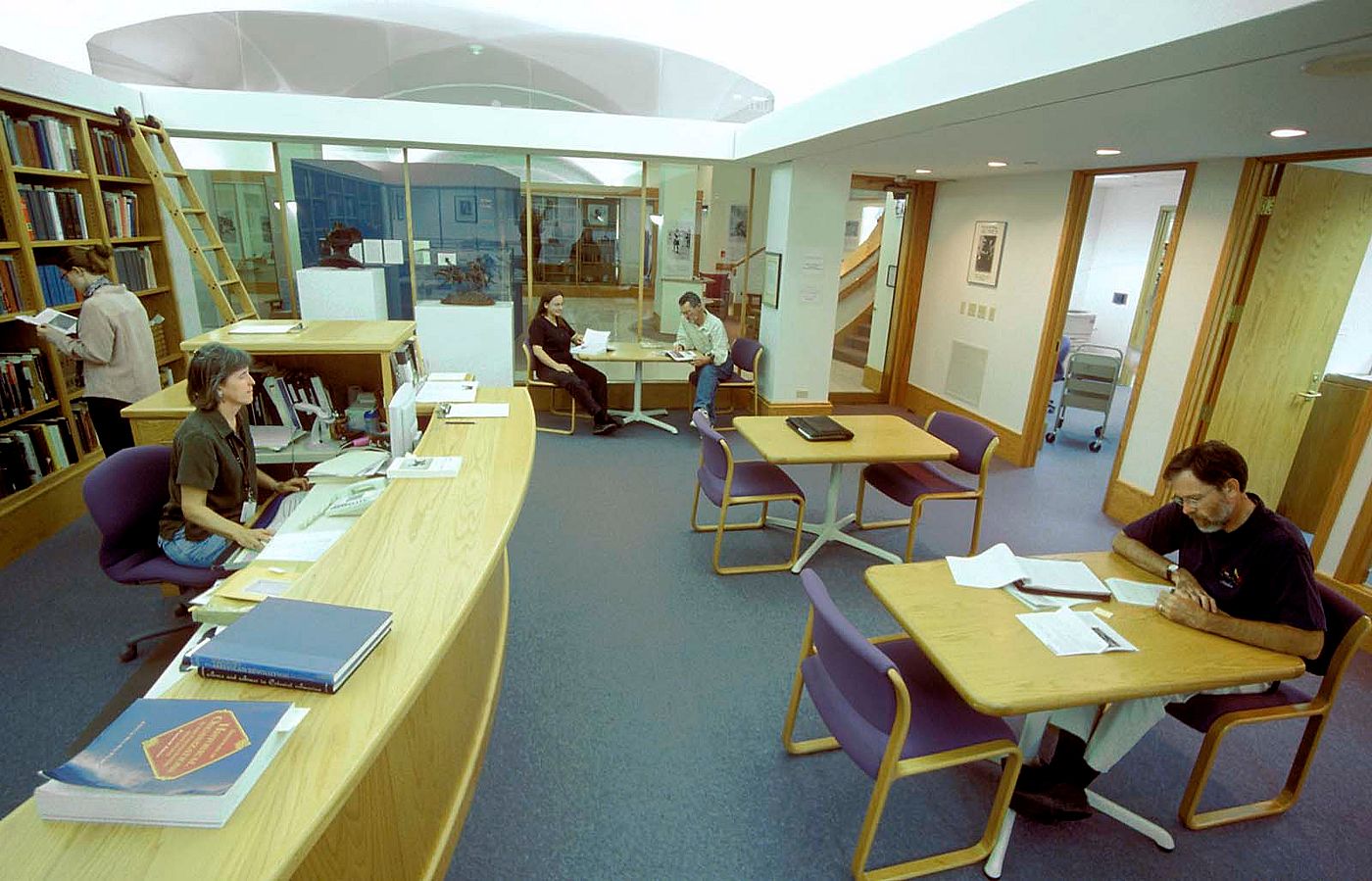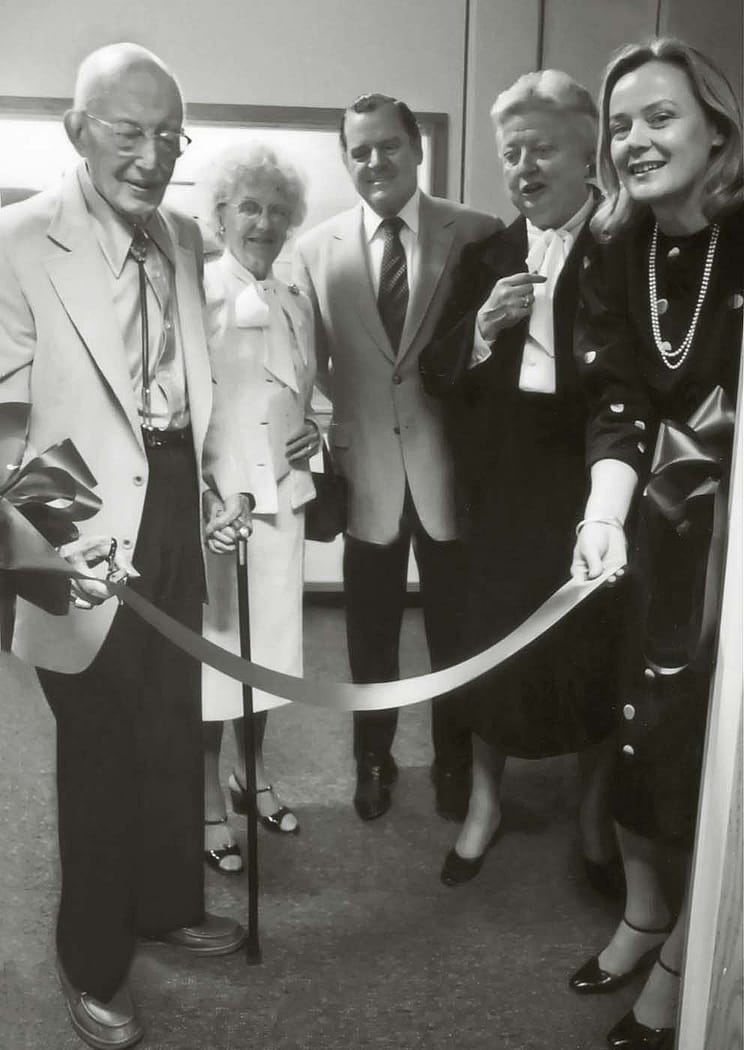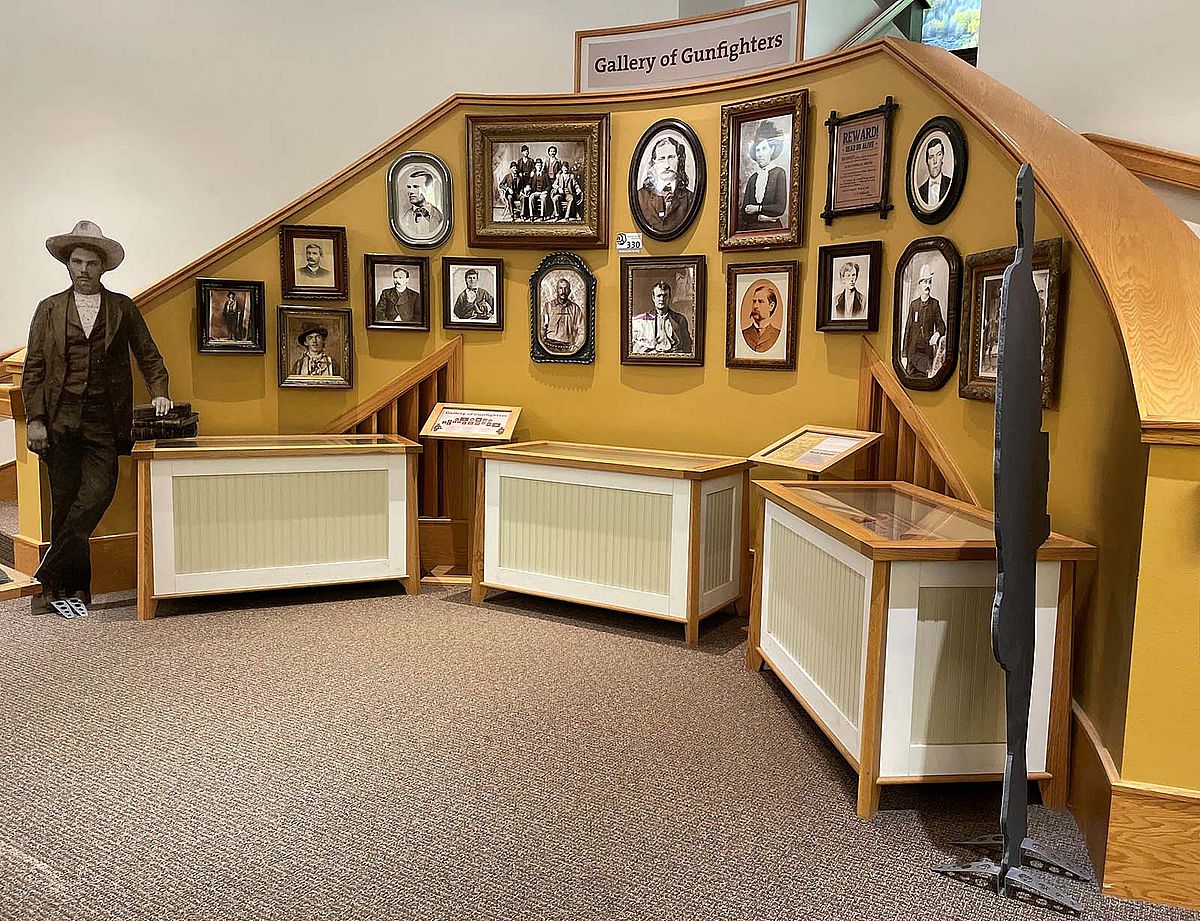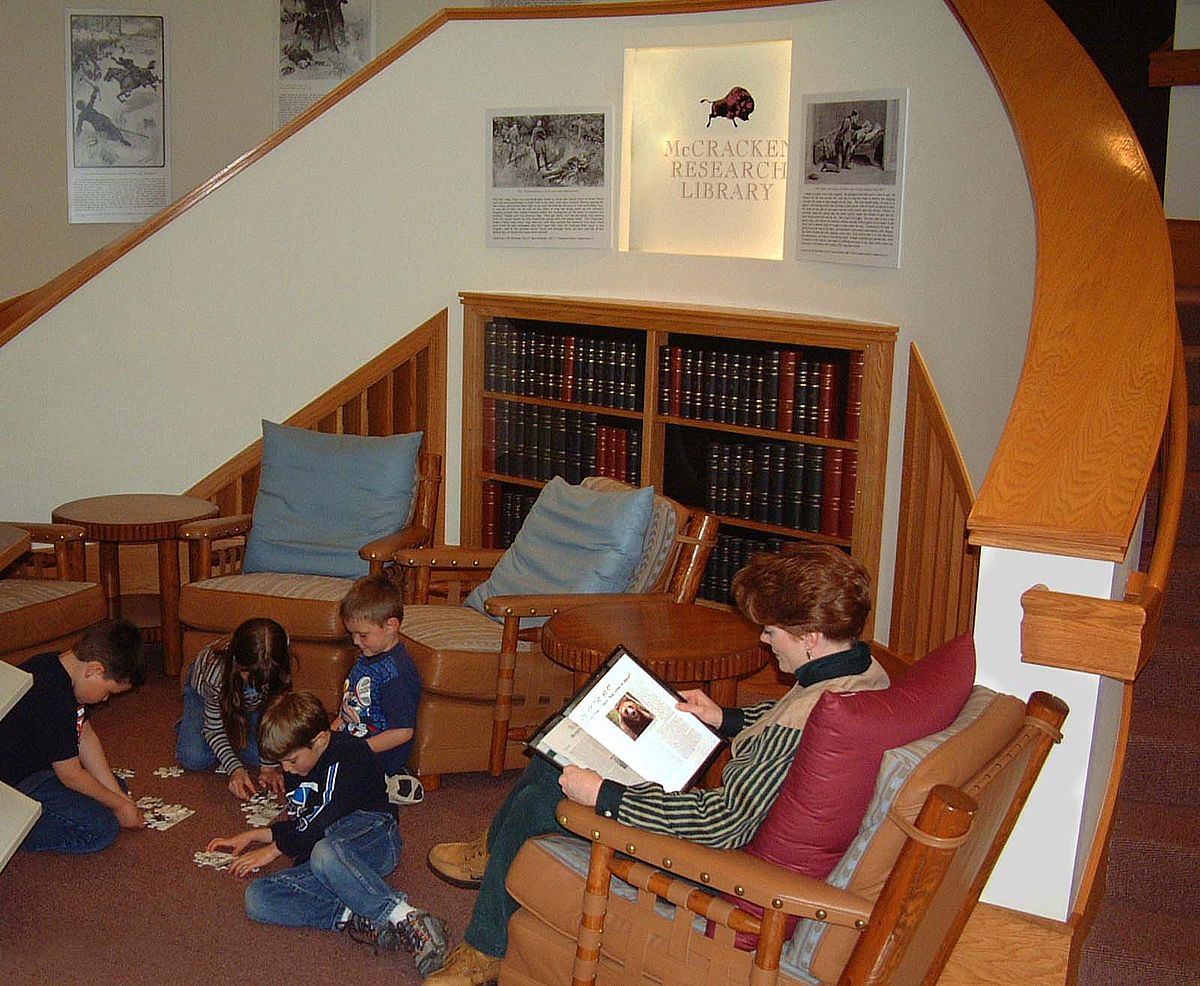
This Library is Anything but Quiet – Points West Online
Originally published in Points West magazine
Spring 2005
This Library is Anything but Quiet
By Nathan Bender, Former Curator, McCracken Research Library
Norman Cousins (1915–1990), editor of Saturday Review for many years, once said, “A library, to modify the famous metaphor of Socrates, should be the delivery room for the birth of ideas—a place where history comes to life.”
Nowhere is this more true than in the Buffalo Bill Center of the West’s McCracken Research Library. Here, archival records abound to make any Western Americana researcher book the next flight to Cody, Wyoming. The McCracken Research Library is a “do not miss” for visitors to the Center with its original historic documents, one-of-a-kind photographs, microfilm, and a shelf collection of all things western.
And 2005 [the year this article was first published] is the perfect time to make the trip.
In 2005, the McCracken Research Library marked its 25th anniversary with a number of special events. Visitors could view a unique history display in the gallery adjoining the library, could contribute to the library development drive, and enjoyed a special June 15 open house highlighting the McCracken’s treasures. [The library gallery, rededicated in 2019 as the Shiebler Family Library Gallery, continues to host special exhibits from the photograph collection.]


A temporary library display in 2005 featured significant early contributions to the collections and traced the origins and growth of the library. The development drive aimed to increase funding for current and future library needs. As library visitors enjoyed the wealth of study resources contributed by donors over the years, it was hoped they, too, would be encouraged to donate new research collections and materials. Such an effort continues the library’s tradition of supporting research and scholarship as part of the development of new knowledge of the American West.
The library, dedicated in 1980, is named in honor of Dr. Harold McCracken (1894 – 1983), the founding director of the Whitney Western Art Museum and of the then-named Buffalo Bill Historical Center. This name is both fitting and appropriate, as libraries and museums were the primary means by which McCracken educated himself throughout his life. A second dedication was held in 1994 to celebrate the expansion and reinstallation of the library in its present location at the south end of the lower level of the Buffalo Bill Museum.

The McCracken Research Library serves as an international information resource on the American West with its 25,000 volumes of publications, 3,000 cubic feet of manuscripts, 250,000 photographic images, microfilm, and sound and video recordings, and other materials. [By 2021, library resources had grown to 36,000 books, more than 600 numbered manuscripts, and more than one million photographic images.]
The library not only supports the work of the museum staff but is also regularly used by high school and college students, scholars who are awarded resident fellowships in the Center’s annual Fellowship Program, and numerous museum visitors.
A wide variety of important primary research materials on many western figures and themes attract students and researchers from educational centers all over the world. Subjects include William F. “Buffalo Bill” Cody, Annie Oakley, and others who performed in Buffalo Bill’s Wild West. In addition, the library houses materials regarding many noted western American artists and their work. These painters and sculptors include Frederic Remington, A. Phimister Proctor, Frank Tenney Johnson, W.H.D. Koerner, and Joseph Henry Sharp. What’s more, resources abound on the subject of North American Indian culture with emphasis on the Plains nations. Firearms history and technology, with primary sources on the Winchester Repeating Arms Co., are also a part of library materials.

Other collections relate to the natural history of the Greater Yellowstone Area, including research papers of regional geologist William G. Pierce and paleontologists Robert Witter and Elaine Anderson. Recordings are archived of more than 20 years of the Center’s former annual Cowboy Songs and Range Ballads event, garnered from performances at the Center. Staff and volunteers of the McCracken Research Library have been steadily adding significant oral history interviews of local and regional individuals to the collections during the last five years.
A broad photographic collection reinforces and complements any researcher’s work concerning western themes. Students of the West will recognize the work of such celebrated 19th century photographers as D.F. Barry, L.A. Huffman, John C.H. Grabill, F.J. Haynes, Frank Rinehart, and Adolph F. Muhr. Major collections of photographs by Park County, Wyoming, photographers Charles Belden and Jack Richard, and examples of the works of others such as F.J. Hiscock, “Brownie” Newton, and Stan Kershaw, are important components of the library’s holdings.
In addition, photograph collections of western artists W.H.D. Koerner and Joseph Henry Sharp provide insight into their work methods. Twentieth century photographers specializing in the North American Indian, such as Edward S. Curtis, Thomas Marquis, Rev. W.A. Petzoldt, Roland Reed, Fred Miller, Richard Throssel, J.E. Tuell, and Fred Meyer, among others, provide an extraordinary look into these unique cultures.
The library is a non-circulating reference library in that materials may only be used at the Buffalo Bill Center of the West. Access to library holdings was increased in the late 1990s with the automation of the library catalog. Later, the library joined the statewide Wyoming Libraries Database (WYLD) consortium and all publications were entered into the records of the international Online Computer Library Center (OCLC) research database. Library holdings may be accessed at library.centerofthewest.org. For more information on the McCracken Research Library, visit the McCracken Library section of our website, or contact library staff at [email protected] or 307-578-4059.
Post 322
Written By
Nancy McClure
Nancy now does Grants & Foundations Relations for the Center of the West's Development Department, but was formerly the Content Producer for the Center's Public Relations Department, where her work included writing and updating website content, publicizing events, copy editing, working with images, and producing the e-newsletter Western Wire. Her current job is seeking and applying for funding from government grants and private foundations. In her spare time, Nancy enjoys photography, reading, flower gardening, and playing the flute.











